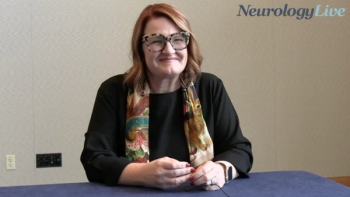
Enrollment Complete for Phase 2b/3 COMBAT-ALS Study of PDE4 Inhibitor Ibudilast
Key Takeaways
- The COMBAT-ALS trial has fully enrolled 230 ALS patients, with a 12-month double-blind phase and a 6-month open-label extension.
- Ibudilast, a PDE and MIF inhibitor, targets neuroinflammation by modulating glial activation, and is being tested for ALS, MS, and other conditions.
MediciNova's COMBAT-ALS trial reaches full enrollment, exploring ibudilast's potential to treat ALS and improve patient outcomes.
Years after the FDA originally cleared the trial’s protocol, MediciNova’s phase 2b/3 COMBAT-ALS trial (NCT04057898) testing ibudilast in patients with amyotrophic lateral sclerosis (ALS), reached its final enrollment. The trial, which spans across sites in the United States and Canada, is anticipated to include 230 patients with a double-blind phase lasting 12 months.1
Ibudilast, also known as MN-166, is an oral phosphodiesterase (PDE) inhibitor and migration inhibitor factor (MIF) inhibitor that modulates neuroinflammation by targeting glial activation. The therapy was originally developed in the late 1980s but has been repurposed and investigated for conditions like ALS, progress multiple sclerosis (MS), and degenerative cervical myelopathy.
COMBAT-ALS, which was given FDA go-ahead in 2019, is a double-blind, placebo-controlled trial that includes a 12-month treatment phase, followed by a 6-month open-label extension. Like many traditional trials, patients will be randomly assigned 1:1 to either MN-166 or matching placebo, using change in ALS Functional Rating Score-Revised (ALSFRS-R) over the initial 12 months as the primary outcome measure. Other secondary outcomes include change in muscle strength by hand-held dynamometry, change in the ALS Assessment Questionaire (ALSAQ-5), survival, and percentage of responders, according to ALSFRS-R total score.2
"This milestone marks a significant step forward in the development of MN-166, reflecting strong collaboration among clinical sites, investigators, and patient communities. We are grateful to all the patients, their family, caregivers, investigators, and study teams whose dedication made this achievement possible," Yuichi Iwaki, president and chief executive officer at MediciNova, said in a statement.1
He added, "Reaching our target number enrollment allows us to move confidently into the next phase of the trial and brings us closer to understanding the potential impact of MN-166 and potentially bring hope to the millions of people who suffer from this devastating condition."
The fully enrolled study includes those aged 18 to 80 with either familial or sporadic ALS, with disease onset within the past 18 months. Coming into the study, patients must have at least 70% predicted vital capacity, be able to swallow capsules, and have stable use of riluzole or edaravone if already prescribed. Some of the key exclusions include significant liver dysfunction, major psychiatric illness or dementia, recent high-dose injectable vitamin B12 use, poor venous access, or participation in another investigational trial within 30 days. Patients requiring tracheostomy or near-continuous ventilatory support are also not eligible.2
READ MORE:
At the 35th International Symposium on ALS/MND, held December 2024 in Montreal, MediciNova presented a trial update and interim analysis results for COMBAT-ALS. At the time, 217 participants were enrolled, with positive correlations observed between the 6-month and 12-month data for Combined Assessment of Function and Survival (CAFS) scores (Spearman Rank coefficient, 0.71), modified CAFS score (0.70), and ALSFRS-R (0.69). In addition, positive correlations were also observed for Bulbar score (0.74), Fine motor score (0.71), and Gross motor score (0.67), but not for Respiratory score.3
Ibudilast most notably made noise in a phase 2 trial (NCT01982942) of progressive MS, published in the New England Journal of Medicine in 2018. Dubbed SPRINT-MS, the trial included 255 patients with primary or secondary progressive MS who received no more than 100 mg daily of ibudilast or placebo for 96 weeks. Overall, investigators observed a –0.0010 per year change in brain parenchymal fraction, the primary end point, for patients on ibudilast vs changes of –0.0019 for placebo (P = .04), representing approximately 2.5 ml less brain-tissue loss with ibudilast over a 96-week period.4
MN-166 was also assessed in an open-label study of patients with ALS (n = 36), using change in PBR28-PET uptake in primary motor cortices, as well as neurofilament light (NfL), as the primary end point. At the conclusion of the study, findings revealed that ibudilast up to 100 mg/day led to no significant reductions in motor cortical glial activation (standard uptake value ratio [SUVR] median change, 0.002; 95% CI, –0.184 to 0.156; P = .5) over 12-24 weeks and NfL (0.4 pg/ml; 95% CI, –1.8 to 17.5; P = 0.2), measured over 36-40 weeks.5
REFERENCES
1. MediciNova Achieves Enrollment in COMBAT-ALS Clinical Trial. News release. MediciNova. August 26, 2025. Accessed August 27, 2025. https://www.globenewswire.com/news-release/2025/08/26/3139673/7767/en/MediciNova-Achieves-Enrollment-in-COMBAT-ALS-Clinical-Trial.html
2. Evaluation of MN-166 (Ibudilast) for 12 Months Followed by an Open-label Extension for 6 Months in Patients With ALS (COMBAT-ALS). Clincialtrials.gov. Updated August 5, 2025. Accessed August 27, 2025. https://clinicaltrials.gov/study/NCT04057898
3. MediciNova Presents Study Update and Interim Analysis of Phase 2/3 Clinical Trial of MN-166 (ibudilast) in ALS (COMBAT-ALS Clinical Trial) at the 35th International Symposium on ALS/MND. News release. MediciNova. December 5, 2025. Accessed August 27, 2025. https://investors.medicinova.com/news-releases/news-release-details/medicinova-presents-study-update-and-interim-analysis-phase-23
4. Fox RJ, Coffey CS, Conwit R, et al. Phase 2 Trial of Ibudilast in Progressive Multiple Sclerosis. NEJM. 2018;379:846-855. doi:10.1056/NEJMoa1803583.
5. Babu S, Hightower BG, Chan J, et al. Ibudilast (MN-166) in amyotrophic lateral sclerosis- an open label, safety and pharmacodynamic trial. 2021;30:102672. doi:10.1016/j.nicl.2021.102672.
Newsletter
Keep your finger on the pulse of neurology—subscribe to NeurologyLive for expert interviews, new data, and breakthrough treatment updates.


































